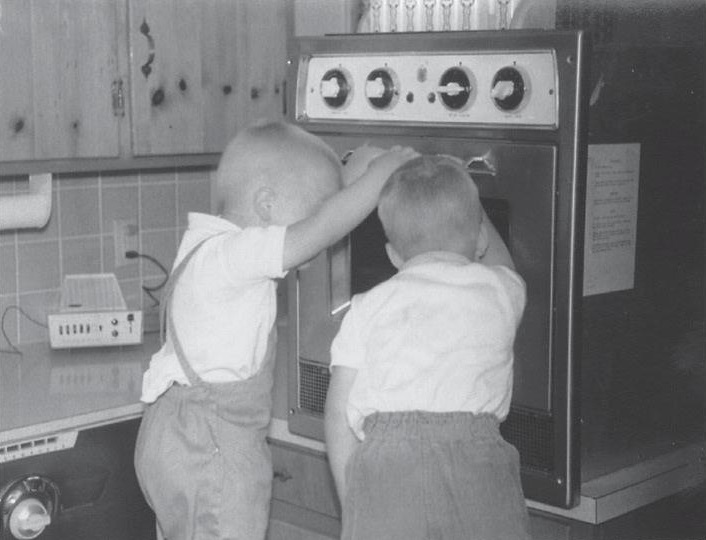Friction: Now you’re cooking!
Evan Zabawski | TLT From the Editor May 2011
A little tribology in the kitchen can save time.

Water molecules flipping back and forth create friction which generates enough heat to cook.
Whenever I am teaching and define friction as a resisting force, I ask if all friction is bad and where it could be beneficial. People are pretty quick to say it is not all bad, but occasionally need a little help thinking of examples. When I prompt them with the suggestion of needing friction while driving, they quickly answer with “tires on pavement” and “brakes.”
For some reason, no one ever suggests friction is useful in the kitchen. In fact, application of friction at the molecular level has proven to be the biggest timesaver in the kitchen since the electric range, thanks in part to Percy Spencer’s invention of the microwave oven.
Percy Spencer joined Raytheon as their fifth employee in the early 1920s and started on a path that would earn him hundreds of patents, including a voltage regulator, glow lamp and a variable color light source. During World War II, he focused his efforts on the production of magnetrons, which were used to transmit microwaves for radar applications.
By 1941 Raytheon was only producing 17 magnetrons a day, so Spencer set out to create a simpler magnetron that could be mass produced. Inspired by a stack of coins in his pocket, he replaced the precision copper bars and soldered internal wires with lamina and a simple solid ring. With some other improvements, production climbed to 2,600 magnetrons per day.
In 1945, while researching radar, Percy stopped in front of an operating magnetron just for a minute. Suddenly he felt a strange sensation, which he realized was the melting of the chocolate bar in his pocket. Curiosity got the better of him and he placed popcorn kernels near the magnetron; soon he had popcorn popping. Next Spencer tried an egg, which exploded onto a nearby coworker, proving that these microwaves could be used to cook food quickly and unconventionally.
Though he applied for a patent immediately, it wasn’t until 1947 that the Radarange debuted as a commercially available microwave oven (only 750 pounds, about six feet tall and over $2,000). In 1955 Raytheon licensed the microwave to the Tappan Stove Co., who produced a domestic version, ringing in at $1,295 and still too bulky for the average kitchen. In 1965 Raytheon acquired Amana Refrigeration and began selling microwaves on a larger scale.
Aided greatly by the Japanese development of a smaller magnetron, the first truly compact and practical microwave oven was introduced in 1967 and cost $495. Eventually gaining widespread acceptance, few understood how the microwave actually functioned, as they just appreciated its speed and respected its dangers.
Microwave ovens produce an electromagnetic wave 122 mm long, and when a metal object with pointed projections (forks, serrated knives, foil wrappers) interferes with the wave, electricity is pulled into a small discharge or bolt, potentially causing a fire. If a microwave is operated empty, the waves may reflect back and fry the magnetron.
However, if food is placed in the path of the microwaves, the internal liquid water molecules (which have slightly positively and negatively charged ends) become excited and begin flipping back and forth like tiny magnets changing polarity. All this flipping back and forth, at a rate of 4,900 times per second, leads to lots of bumping and rubbing and friction.
This friction generates enough heat to cook the surrounding food, though not exactly from the inside outwards as is commonly thought. In reality, the cooking begins just below the surface and decreases in energy as it progresses inwards and outwards. The deeper and denser the food, or the lower its ability to conduct heat, the less cooking will take place in its interior.
So the next time you use a microwave oven, you can appreciate its accidental discovery and its introduction of friction as a heat source for shorter cooking times.
 Evan Zabawski, CLS, is manager of training and education services for The Fluid Life Corp. in Edmonton, Alberta, Canada. You can reach him at evan@fluidlife.com
Evan Zabawski, CLS, is manager of training and education services for The Fluid Life Corp. in Edmonton, Alberta, Canada. You can reach him at evan@fluidlife.com.